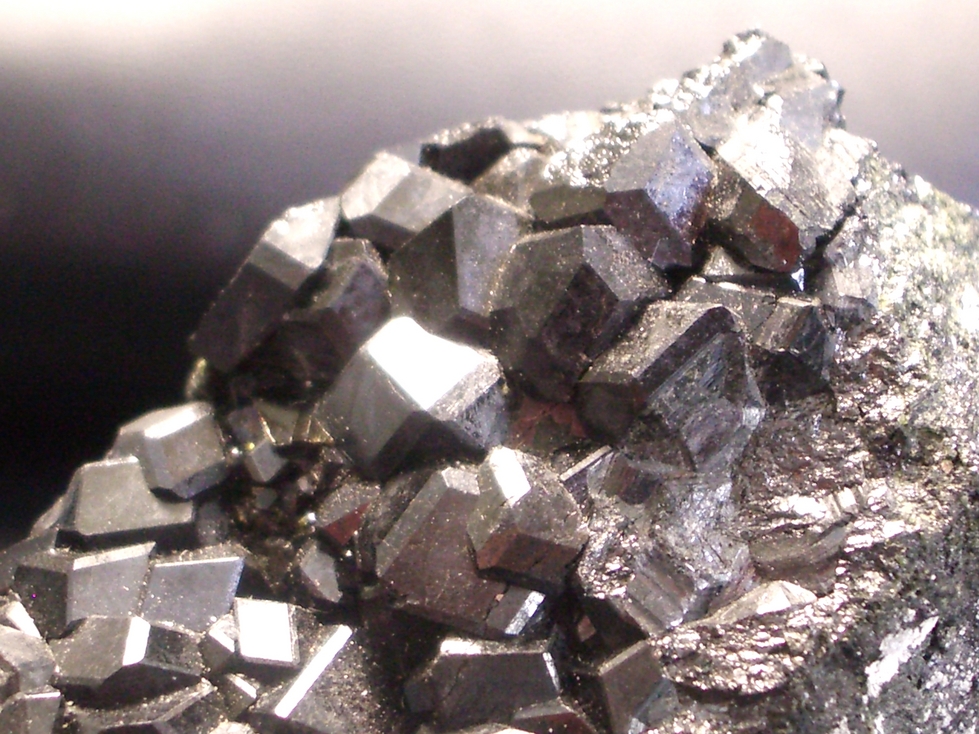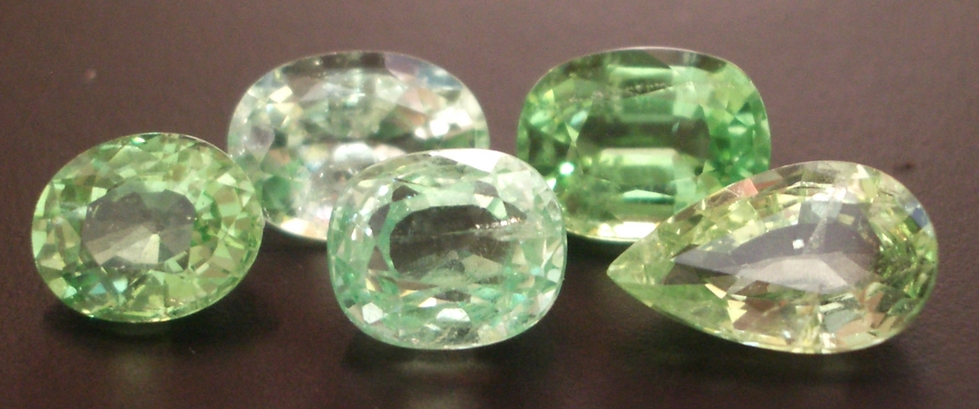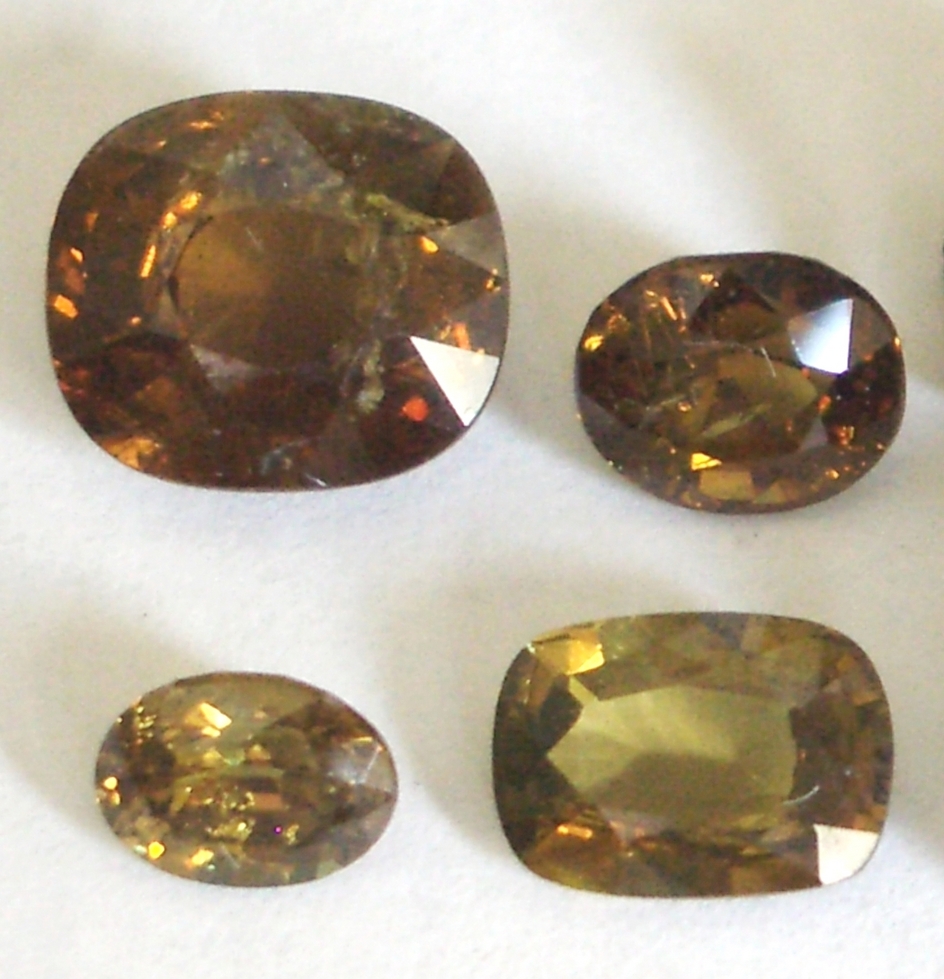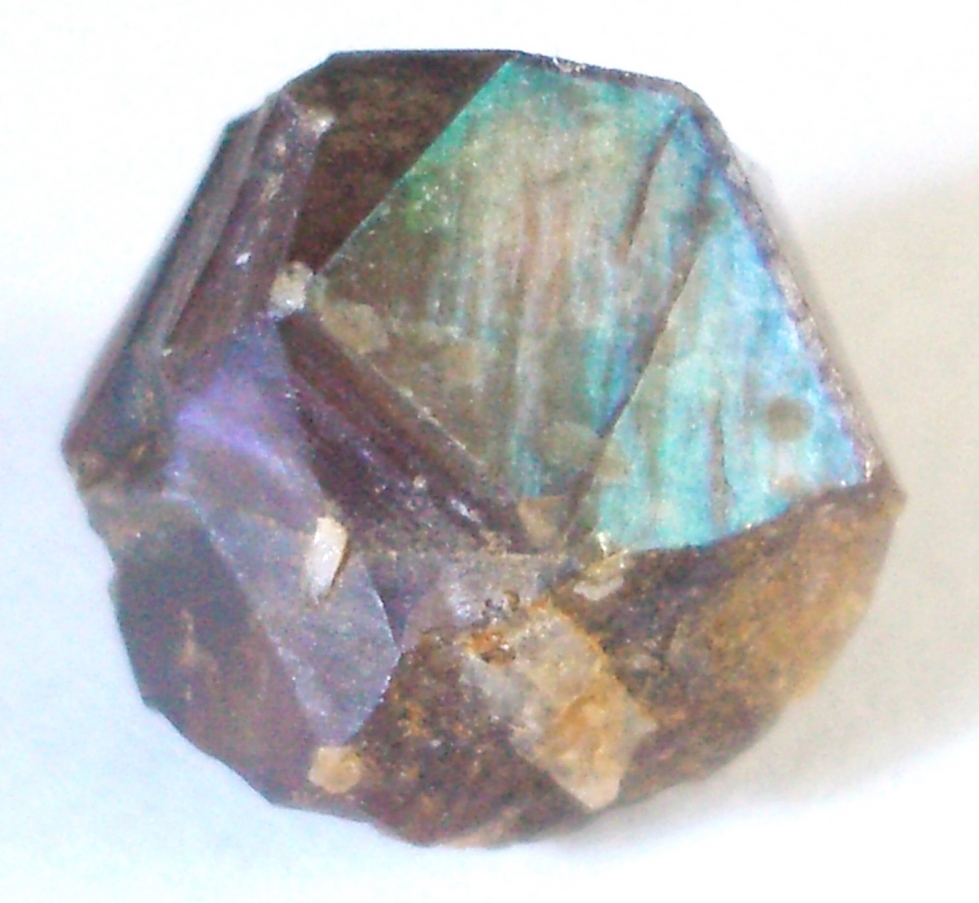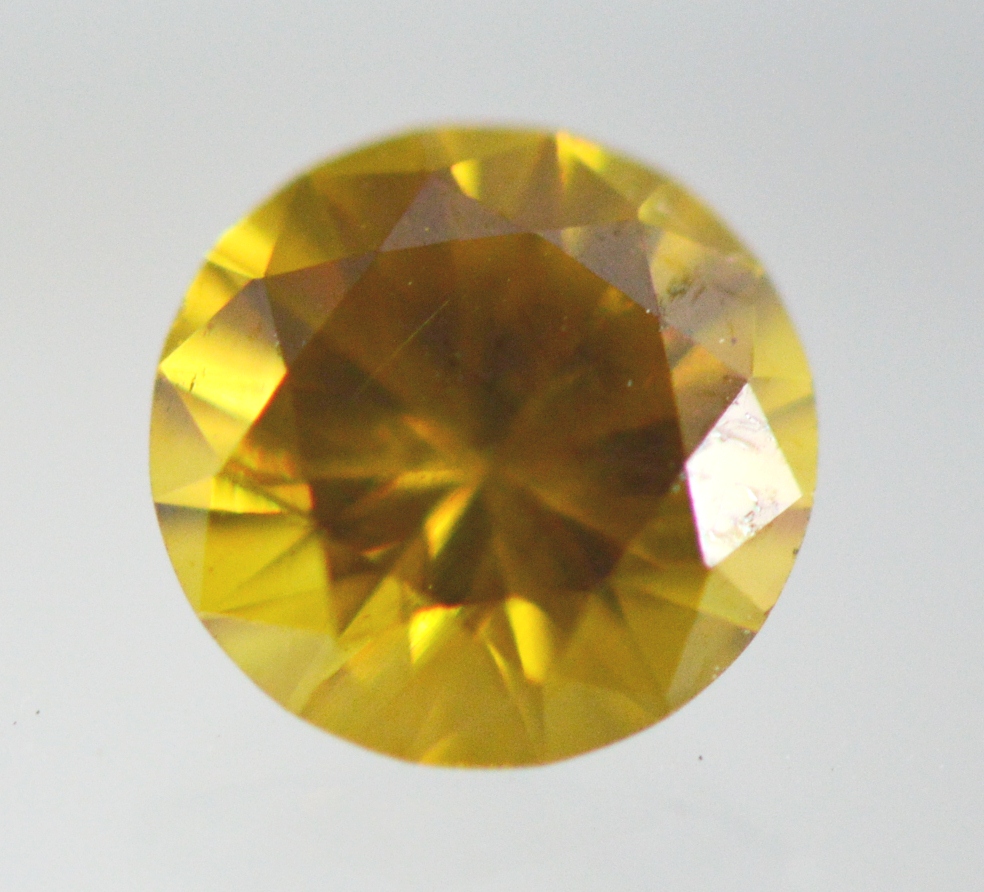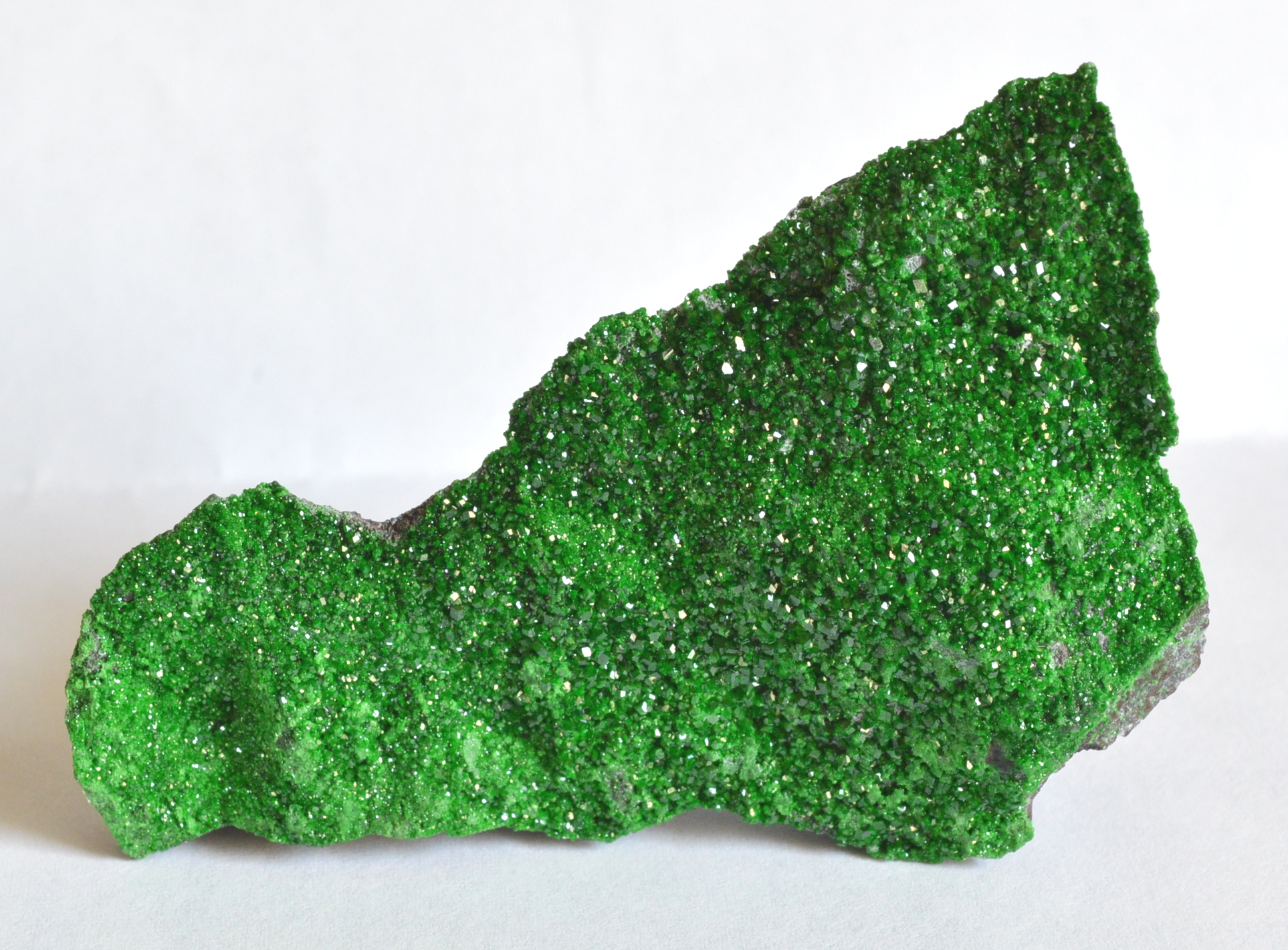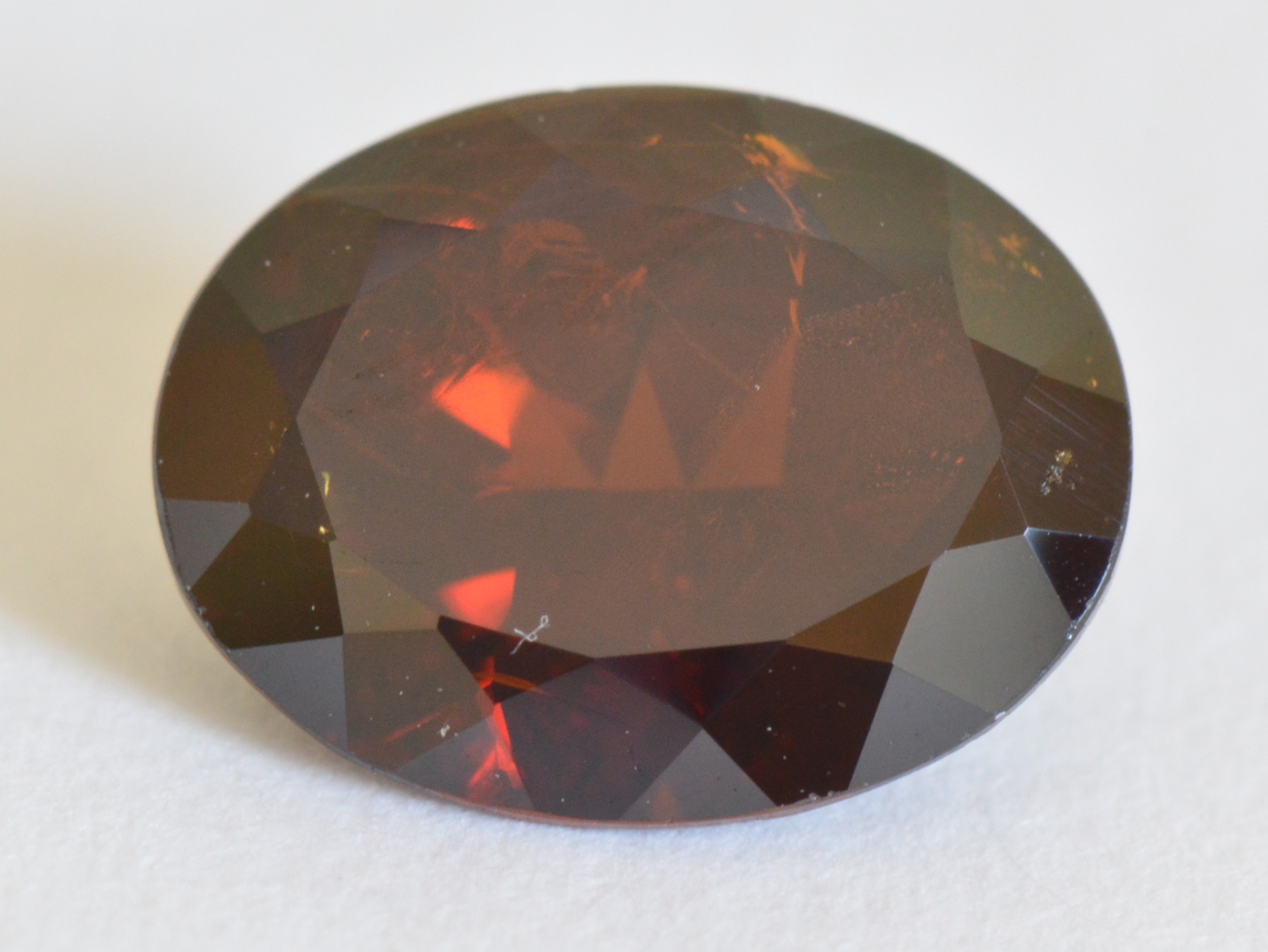Ugrandites are sometimes referred to as the calcium Garnets. All 3 gem species (Uvarovite, Grossular and Andradite) have calcium in the A site of their chemical formulas. Like Pyralspites, they exhibit a wide diversity of color, particularly among Grossular Garnets. Small amounts of chromium from Uvarovite & Knorringite, and vanadium from Goldmanite, are largely responsible for the green colors we see throughout the Ugrandite Garnets. Trivalent iron (Fe3+) and likely Fe3+ involved in charge Transfer can also contribute to green color. Within Ugrandite gems, iron is a weak chromophore, and can create strong magnetism while also remaining cryptic (not visible as color).
Merelani Grossular Garnets
Demantoid: Green Andradites are a color variety called Demantoid Garnets. They were first discovered in the Ural Mountains of Russia in the mid-1800’s, and today they are also commercially mined in Madagascar and Namibia. Chromatic dispersion or "fire" in these gems is even greater than in Diamond, and transparent green Demantoids are the most valuable Garnets in the world, particularly those with bright green color derived primarily from chromium (Chrome Demantoids). The best Chrome Demantoids can sell for $10,000 per carat. Demantoid colors range from brownish green to yellowish green to mint green to dark green. In the graph above, the lowest graph point represents a dark green Chrome Demantoid.
Demantoids are the only natural transparent green gemstones of any kind that pick up with a magnetic wand when of average size (with the exception of rare green Color Change Garnet). The high magnetic susceptibility is due to iron (Fe3+).
Brown, Red and Yellow Andradite: Many Andradites have brown to reddish brown color, and on rare occasion, red body color in daylight. Others are yellow, with the trade name Topazolite. Color is likely due entirely to inter-valence charge transfer (iron-titanium and possibly iron-iron, Fe2+-Fe3+). Some brown and yellow Andradites exhibit color change toward red when viewed under incandescent light. Yellow Andradites (Topazolites) also show color change from yellow in warm incandescent light to green (from chromium) in cool LED light. All such warm daylight colors of Andradite are grouped here as Brown Andradite, and all fall along the Grossular-Andradite join on the Andradite graph shown above.
Brown Andradite
"Topazolite" from Arizona
Demantoid Garnets
Melanite: Black Andradite is called Melanite or Titanium Andradite. It is generally opaque and has a high luster. This color variety is not common as a gemstone, although historically it was used in mourning jewelry, as was black Schorl Tourmaline. Melanite forms a solid solution series with Schorlomite, which is a non-gem Garnet that has titanium in the B site of its chemical formula. Titanium, iron and manganese contribute to the black color through inter-valence charge transfer (Fe2+-Ti4+, Mn2+-Ti4+, and Fe2+-Fe3+). No Melanite graph points are shown on the graph above. It is probable that points fall along the joining line connecting Andradite and Schorlomite. The Schorlomite end member is for the most part too high to be visible on the graph. There is a wide variance in magnetic susceptibility of black Garnet crystals tested in our study, varying from paramagnetic Melanite crystals to ferromagnetic crystals with extremely high iron content.
Melanite Rough Crystals from Morocco
Iridescent Andradite: One of the rarest Garnets is Iridescent Andradite, also called Rainbow Andradite. It has been mined in Sonora (Mexico), New Mexico (USA), and Nara (Japan). This is an opaque brown Garnet that reflects spectral colors at the surface when light hits at just the right angle. The rainbow color is due to interference colors and to light diffraction within stratified growth layers (Hainschwang and Notari, 2006). This variety of Andradite has the highest magnetic susceptibility and is closer to pure Andradite than any other variety we tested, with a composition of 96% Andradite and 4% Grossular.
Iridescent Andradite Rough from Japan
Chrome Demantoid Garnets
Andradite Graph Points
© Kirk Feral 2011, All Rights Reserved. These materials may be duplicated for educational purposes only. No part of this website may be duplicated or distributed for profit, for commercial purposes, or for posting to another website without the expressed written consent of the copyright holder.
The Ugrandites: Part 1
Andradite & Uvarovite
Andradite has the highest refractive index of all gem Garnets, and due to its high iron content, it is by far the most magnetic of the 3 Ugrandite species. The refractive indices of Andradite are over the limit of a standard refractometer. So how do we plot composition on a RIMS graph without RI readings? The Andradite graph point positions shown below were approximated based on the measured magnetic susceptibility in inferred close proximity to the Grossular-Andradite join. This is based on reports by other researchers that Andradite is in solid solution series with Grossular Garnet rather than with Uvarovite.
Andradite Garnet
Andradite Garnets are found in a range of colors: brown (common Andradite), yellow (Topazolite), green (Demantoid), red, color change, iridescent (a.k.a. Rainbow Garnet), black (Melanite), gray, and in rare instances near-colorless. Colors other than green may involve iron-to-titanium (Fe2+-Ti4+) and iron-to-iron (Fe2+-Fe3+) inter-valence charge transfer. Green color is due to either iron or chromium or a combination of both: iron (Fe3+, yellowish green) and chromium (pure green and bluish green).
Although gemologists generally consider Andradite to be an idiochromatic (self-colored) Garnet species, this designation is questionable. Unlike Andradite, most idiochromatic gems are found in a limited color range. Color due to extraneous coloring agents such as chromium or charge transfer is primarily associated with allochromatic species, yet we find both in Andradite. And near-colorless examples are generally not seen in idiochromatic gems, yet near-colorless Andradite has been documented (see below).
Trivalent iron (Fe3+) is a weak chromophore, and pale green Andradite Garnets with very high iron content can have equally low color saturation as pale green Grossular Garnets with very low iron content. Due to intermixing, all gem Garnets are a combination of idiochromatic and allochromatic species, but we suggest that Andradite might best characterized as primarily an allochromatic species. This designation would be in spite of the fact that Andradite contains iron as part of its chemical formula.
Uvarovite Garnet
Most Uvarovite Garnet is found in druse form (tiny crystals grown across the surface of host matrix rock). Uvarovite crystals are generally too small to be faceted as gems, but bright green druse specimens on matrix are often fashioned into jewelry. Uvarovite was discovered in the Ural Mountains of Russia, as was green Demantoid. The majority of druse gems offered on the gem market are from Russia, although Uvarovite is found in other locations such as Quebec, Finland, Afghanistan, South Africa and California.
The Uvarovite species is also referred to as Chromium Garnet. Chromium (up to 27% chromium oxide by weight) rather than iron is the idiochromatic coloring agent, imparting a deep green color and strong magnetism to all examples of this species. Vanadium (from Goldmanite) may also contribute to the green color, and published research has shown that in some cases vanadium may be the primary coloring agent. Crystals are mostly opaque, with some transparency near the surface of the crystals.
Chromium ions are rarely magnetically detectable in other gemstone species, but because chromium is in such high concentration in this species, we encounter high magnetic susceptibility from chromium and vanadium that can be measured. Most crystals appear bright red under a Chelsea filter, an indication of the elevated chromium content, but concentration quenching by the high levels of chromium prevents any fluorescence under UV light.
Druse specimens of Uvarovite attached to matrix are generally too heavy to show a direct response to a magnet. Although not transparent, the small size of druse crystals permits them to transmit more light than larger Uvarovite crystals that are mostly opaque, and druse specimens appear to have brighter green color than larger crystals. Druse crystals are too small to be measured for magnetic susceptibility with a Hoover balance.
Large Uvarovite Crystal in Matrix
(3mm, Afghanistan)
For our study, a large 1.78ct (4mm) crystal from Finland (above left) and a large 3mm crystal from Afghanistan (above right) were tested for composition using the RIMS method. The crystal from Afghanistan was embedded in host rock that appears to contain Quartz and Chromite, a mineral rich in chromium and iron.
As with all Garnet species, pure end member Uvarovite has not been found in nature. Our Uvarovite crystals have a lower measured magnetic susceptibility (SI 9.09 and SI 9.98) than the hypothetical pure end member (SI 12.75 on the Hoover Diagram). Uvarovite is known to mineralogists to be in solid solution with Grossular and to some extent with Pyrope. In most cases, very little Andradite (i.e. Fe3+ iron) is present.
Therefore, we use a Uvarovite-Grossular-Pyrope ternary to plot our graph point rather than the standard Uvarovite-Grossular-Andradite ternary. We extrapolate the over-the-limit refractive index based on proximity to the join connecting Grossular to Uvarovite at the measured level of magnetic susceptibility. If the Finland crystal is colored by vanadium from Goldmanite, then a ternary encompassing Goldmanite would be more appropriate.
The resulting RIMS composition indicates approximately 71% Uvarovite and 29% Grossular for the crystal from Finland, and a higher Uvarovite content of 77% and remaining 23% Grossular for the crystal from Afghanistan. Both also probably contain Goldmanite (vanadium) and a small percentage of Pyrope (magnesium), but these species components are not included in our calculations.
On the graph below, you’ll find the dark green graph points of our samples situated below the pure end member along the Uvarovite (Uv.) and Grossular (Gr.) join. Uvarovite can be referred to as Gruvite Garnet, a blend of Grossular and Uvarovite. The dotted line is used indicate the solid solution between Uvarovite and Pyrope. These Uvarovite specimens are the only Gruvite Garnets encountered in our study of Garnets.
Graph Showing Uvarovite Composition
Large Uvarovite Crystal
(4mm, 1.78ct, Finland)
Chemical analyses of Uvarovite samples presented in Deer, Howie and Zussman's 1982 book Orthosilicates indicate that Uvarovite compositions can fall anywhere along the Grossular-Uvarovite join between 50% and 91% Uvarovite. Some Uvarovite specimens were shown by DH&Z to have high Pyrope content, while others had higher Andradite content.
Those DH&Z researchers also indicate that some mineral specimens referred to as Uvarovite are actually high-chromium Grossulars that have Grossular as the primary component. Like Uvarovites, they could be referred to as Gruvites. Such unusual Gruvite Grossulars would have their RIMS graph points within the Grossular trisection of the Ugrandite ternary along the Grossular-Uvarovite join, with Uvarovite comprising less than 50% of the total composition. No Gruvite Grossular Garnet gems have been encountered in our study of Garnets.
Red Andradite
Near-Colorless Andradite: The near-colorless Andradite pictured below left was documented by the RRUFF Project and is considered to be a very pale Demantoid. All the apparent color is likely derived from iron (Fe3+) rather than from chromium. Although we were not able to test this particular gem, it would qualify as the only colorless or near-colorless natural gemstone that has high enough magnetic susceptibility to be picked up by an N52 magnet. The only other colorless gems that shows a Pick Up response are synthetic GGG (Gadolinium Gallium Garnet) and TGG (Terbium Gallium Garnet), which are allochromatic synthetic Garnets.
It might seem unlikely that a gemstone with such high iron content as Andradite could be near-colorless, but this is another example of how iron in the valence state of Fe3+ is by itself a weak chromophore. The iron in the near-colorless gem (left) is visible only as a very pale yellowish green. We have not personally encountered any Demantoid Garnets with so little color. The Demantoid with the lightest color that we have tested is shown below right. This tiny light green gem was mined in Quebec, Canada, and spectrometer analysis indicates its pale color is associated primarily with iron (Fe3+). Green color appears unequally distributed, and parts of the gem appear completely colorless, suggesting that the green portions are due to color processes rather than iron (Fe3+) alone. This gem has the lowest Andradite content of all Andradites we tested, with a composition of 69% Andradite and 31% Grossular.
Near-colorless Andradite
(Photo by William W. Pinch, Courtesy of rruff.info)
Uvarovite Druse
(Crystals under 0.5mm, Russia)
Large individual Uvarovite crystals are quite rare. These larger crystals (over 1mm) are very dark green in color, mostly opaque and very rarely faceted. Such crystals show a Drag response due to high chromium/vanadium content, and single crystals under 1ct in weight can show a Pick-up response. Some very rare crystals over 10 mm in size have been found in Finland, and relatively large crystals are occasionally mined in Russia and more recently in Afghanistan. The crystal from Finland shown below (left) does not glow red under the Chelsea filter, suggesting it may be colored by a significant amount of vanadium (from the Goldmanite end member species) in addition to chromium from Uvarovite.
Uvarovite Druse
(Crystals up to 1mm, Russia)
All gem Ugrandites except Uvarovite and possibly Melanite can be referred to as Grandites, with major mixing in varying proportions between only 2 end member species, Grossular and Andradite.
Light Green Andradite
Quebec, Canada
Demantoids are also the only Garnets that are commonly treated, with low heat being applied to drive out yellow and brown colors. Heat alters the valence state of iron from Fe2+ to Fe3+, and may eliminate intervalence charge transfer processes that produce yellow and brown color in Andradite. The trivalent iron (Fe3+) remaining in green Demantoid after heat treatment is associated with yellowish green color typical of Demantoid, although this author suggests its likely that color processes such as charge transfer involving Fe3+ are required to produce green color. We infer this because the intensity of green color in Grandite Garnets is largely independent of the concentration of iron. Dark green color in Chrome Demantoids is due to a small amount of chromium and possibly vanadium that is present in addition to the iron, and these Garnets show a red reaction under a Chelsea filter due to chromium.
Color in Andradite Garnet is apparently not completely understood. Published research indicates that iron (Fe3+) creates green color in Andradite (aside from chromium in green Chrome Demantoid). But if Fe3+ by itself can produce green color, then we must ask why light-yellow Andradite (Topazolite) lacks a greenish color component, since yellow Andradite contains a concentration of Fe3+ that is equivalent to green Andradite (Demantoid). Furthermore, synthetic Andradite produced in the lab is light yellow in color rather than green (Geiger et al., 2018). It's reasonable to assume that something besides Fe3+ is involved in creating green color in Andradite. This author speculates that theoretically, in the absence of any color processes such as charge transfer or color centers, Andradite Garnet may be completely colorless.
Natural Yellow Andradite (Topazolite)
The concentration of iron (Fe3+) in Andradite can be up to 29% iron oxide (Fe2O3) by weight, high enough to create pick-up responses in all Andradite gems. The concentration of iron is too high to permit any UV fluorescence from chromium, but a Chelsea filter reveals evidence of chromium in brown, yellow and green Andradite gems. (Divalent iron Fe2+ completely quenches Chelsea filter reactions from chromium, but trivalent iron Fe3+ has only a weak quenching effect). Although the concentration of iron (Fe3+) is high in all Andradites, iron in some cases creates only light colors, as we find in Topazolite and some light yellow-green Demantoids. The average composition of Andradite gems that we tested is 81% Andradite and 19% Grossular.
Multiple Colors of Andradite
Magnetism in Gemstones
An Effective Tool and Method for Gem Identification
© Kirk Feral

